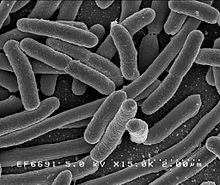Ingredients
Most ingredients in cooking are derived from living organisms. Vegetables, fruits, grains and nuts as well as herbs and spices come from plants, while meat, eggs, and dairy products come from animals. Mushrooms and the yeast used in baking are kinds of fungi. Cooks also use water and minerals such as salt. Cooks can also use wine or spirits. Naturally occurring ingredients contain various amounts of molecules called proteins, carbohydrates and fats. They also contain water and minerals. Cooking involves a manipulation of the chemical properties of these molecules.

In biology, an organism is any contiguous living system (such as animal, fungus, micro-organism, or plant). In at least some form, all types of organisms are capable of response to stimuli, reproduction, growth and development, and maintenance of homeostasis as a stable whole. An organism may be either unicellular (a single cell) or, as in the case of humans, comprise many trillions of cells grouped into specialized tissues and organs. The term multicellular (many cells) describes any organism made up of more than one cell. All organisms living on Earth are divided into the eukaryotes and prokaryotes based on the presence or absence of true nuclei in their cells. The prokaryotes represent two separate domains, the Bacteria and Archaea. Eukaryotic organisms, with a membrane-bounded cell nucleus, also contain organelles, namely mitochondria and (in plants) plastids, generally considered to be derived from endosymbiotic bacteria.[1] Fungi, animals and plants are examples of species that are eukaryotes. In 2002 Thomas Cavalier-Smith proposed a clade, Neomura, which groups together the Archaea and Eukarya. Neomura is thought to have evolved from Bacteria, more specifically from Actinobacteria.[2] See Branching order of bacterial phyla. The term "organism" (Greek ?????????? – organismos, from Ancient Greek ??????? – organon, "instrument, implement, tool, organ of sense or apprehension"[3]) first appeared in the English language in 1701 and took on its current definition by 1834 (Oxford English Dictionary). It is directly related to the term "organization". There is a long tradition of defining organisms as self-organizing beings.[4] There has been a great deal of recent controversy about the best way to define the organism[5] and indeed about whether or not such a definition is necessary.[6] Several contributions[7] are responses to the suggestion that the category of "organism" may well not be adequate in biology.[8] [edit]Semantics The word organism may broadly be defined as an assembly of molecules functioning as a more or less stable whole that exhibits the properties of life. However, many sources propose definitions that exclude viruses and theoretically possible man-made non-organic life forms.[9] Viruses are dependent on the biochemical machinery of a host cell for reproduction. Chambers Online Reference provides a broad definition: "any living structure, such as a plant, animal, fungus or bacterium, capable of growth and reproduction".[10] In multicellular terms, "organism" usually describes the whole hierarchical assemblage of systems (for example circulatory, digestive, or reproductive) themselves collections of organs; these are, in turn, collections of tissues, which are themselves made of cells. In some plants and the nematode Caenorhabditis elegans, individual cells are totipotent. A superorganism is an organism consisting of many individuals working together as a single functional or social unit.